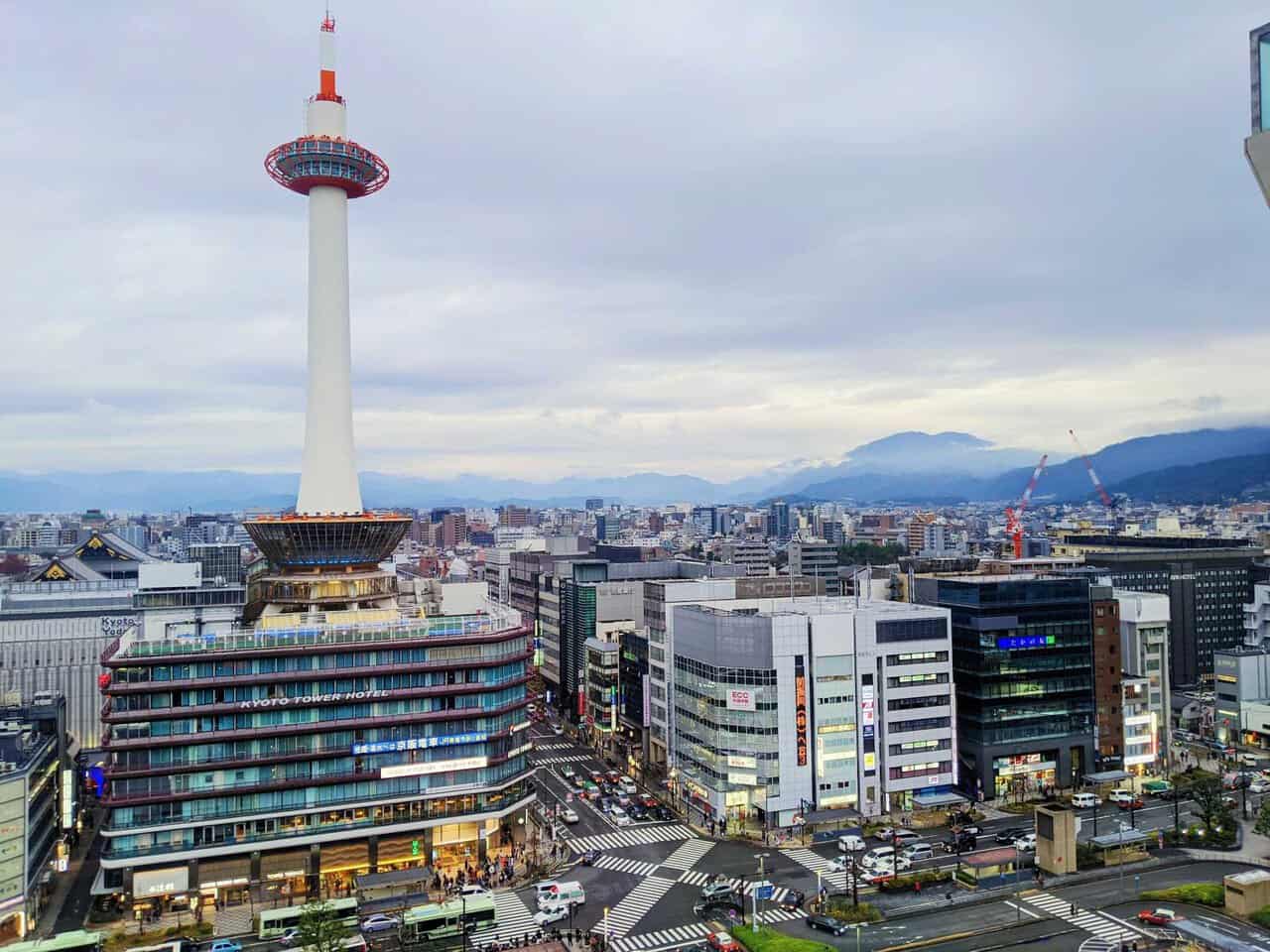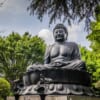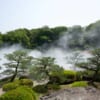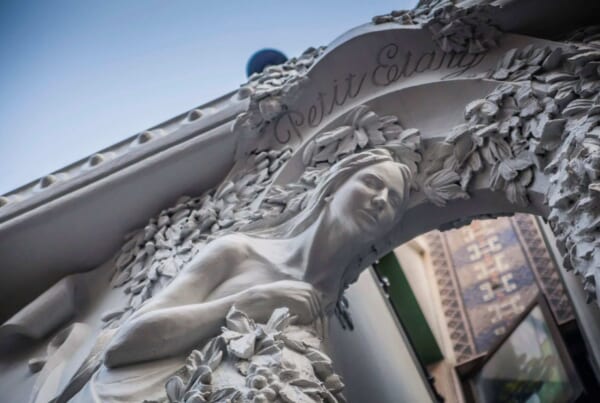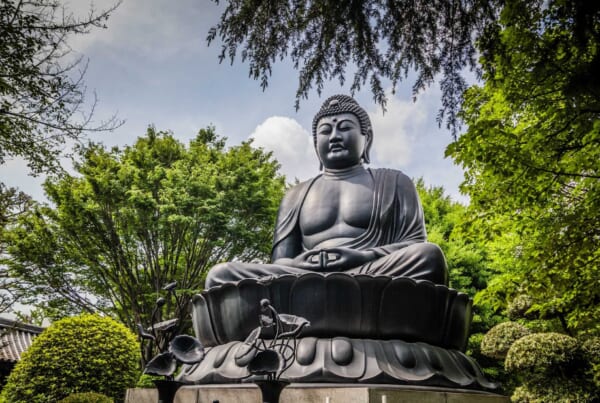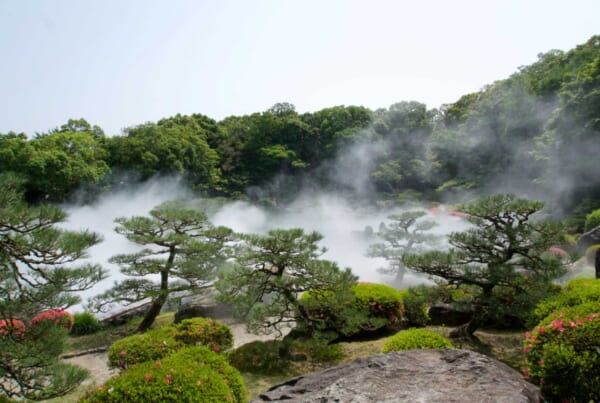The charms of Kyoto, curated over centuries, are in such abundance that it can seem like an enchanted city. There are lifetimes of shrines and tranquil gardens, generations of craftspeople plying their timeless trades, and festively lantern-lit terraces which line the lazy flow of the Kamogawa River 鴨川. Above it all, stretching dreamily between the distant blue haze of the city’s all-but-encompassing hills, is a vast expanse of alluringly expressive sky, reflecting the colors of the changing hours and seasons.
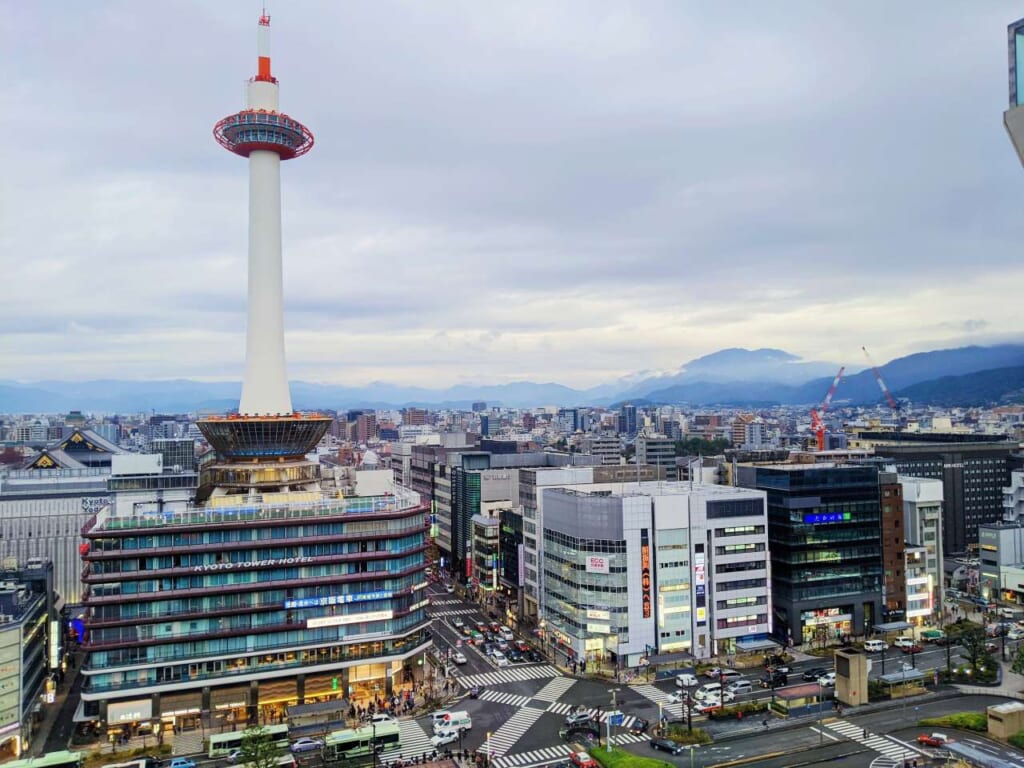
This most intangible of the ancient capital’s assets has long been guarded against architectural incursion, and very few structures dare to jut above the city’s gently nestling vista. Of those brave enough to try, none do it with more attention-seeking incongruity, or space-age panache, than Kyoto Tower 京都タワー.
Rapid Expansion
Having rebuilt in remarkable speed and style following the devastating losses of World War II, Japan went through a further period of rapid modernization, with construction reaching frenzied new heights in the run up to the 1964 Tokyo Olympics. This event was seen as an important chance for the country to reintroduce itself; not just as a peaceful ally and a dependable industrial powerhouse, but also as a natural home to cutting-edge design and a colorful pop-culture aesthetic.
As work began on Kenzo Tange’s era-defining Yoyogi National Gymnasium in the rapidly expanding chaos of pre-Olympics Tokyo, 280 miles to the west, residents of the capital’s older and more elegant sibling, Kyoto, were also invited, although with very little room for refusal, to share in just a touch of the 20th Century architectural excitement.
A site directly across from the city’s railway station, once home to the now-relocated central post office, had long been pegged for a project thought worthy of its focal position in a city of Kyoto’s cultural standing. An observation deck, of relatively restrained proportions in its original conception, was deemed an appropriate endeavor, but swept along by the artistically adrenalized spirit of the times, accompanied almost certainly by less elevated motives, the project became vastly more ambitious.
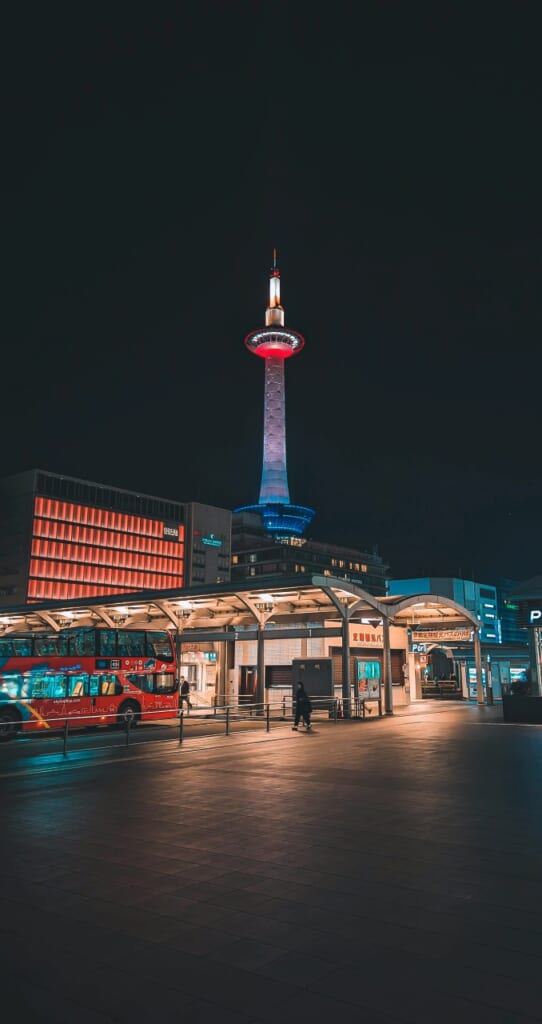
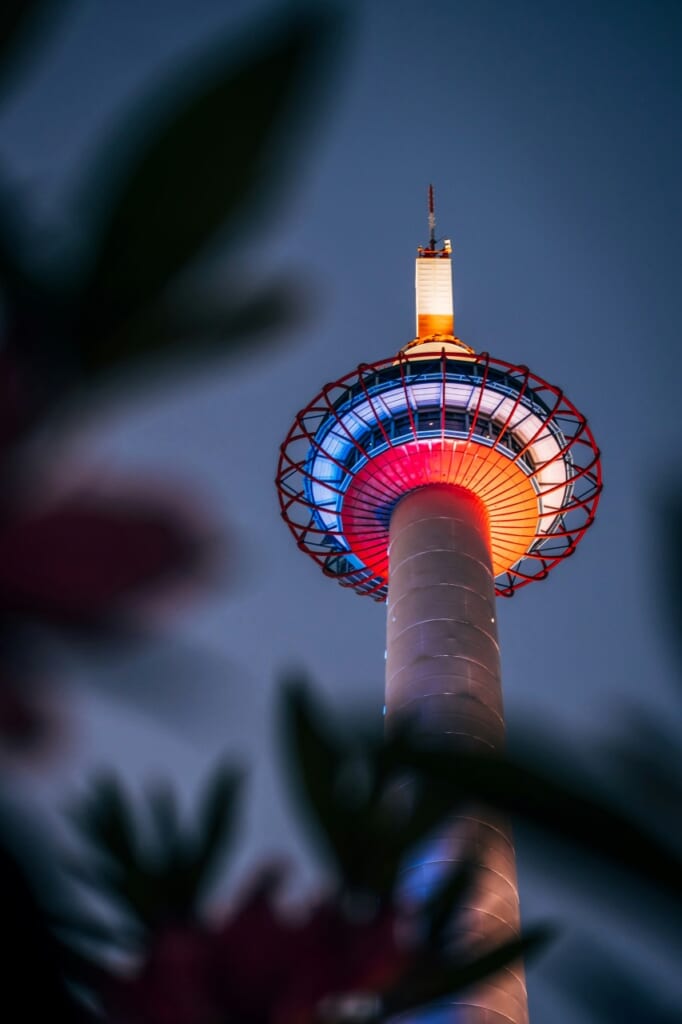
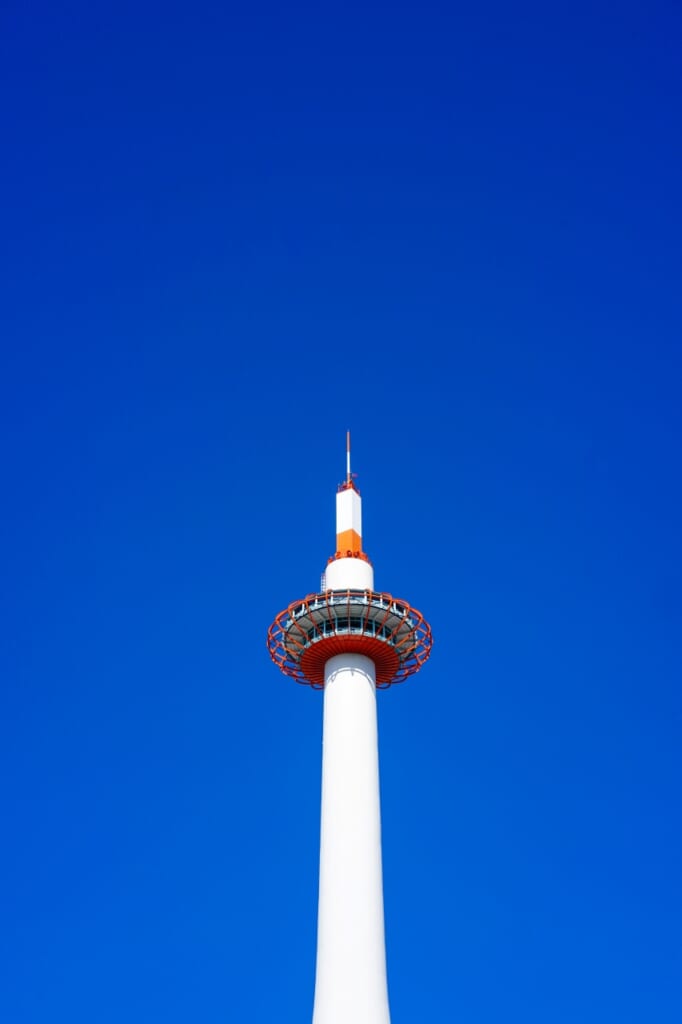
With a somewhat slippery use of semantics, emboldened plans for an imposing tower, identified it specifically as a structure, making it easy, but not uncontroversial, to overlook an unwritten but hitherto-respected rule, that no building should exceed the 180 ft of the Toji Temple. Announcement to the public of the city’s imminent and irreversible skyward lurch was also conveniently delayed past any reasonable point-of-no-return. The 430 ft column of sleek white futurism that rose out of these contentious foundations still dominates the Kyoto skyline 60 years later.
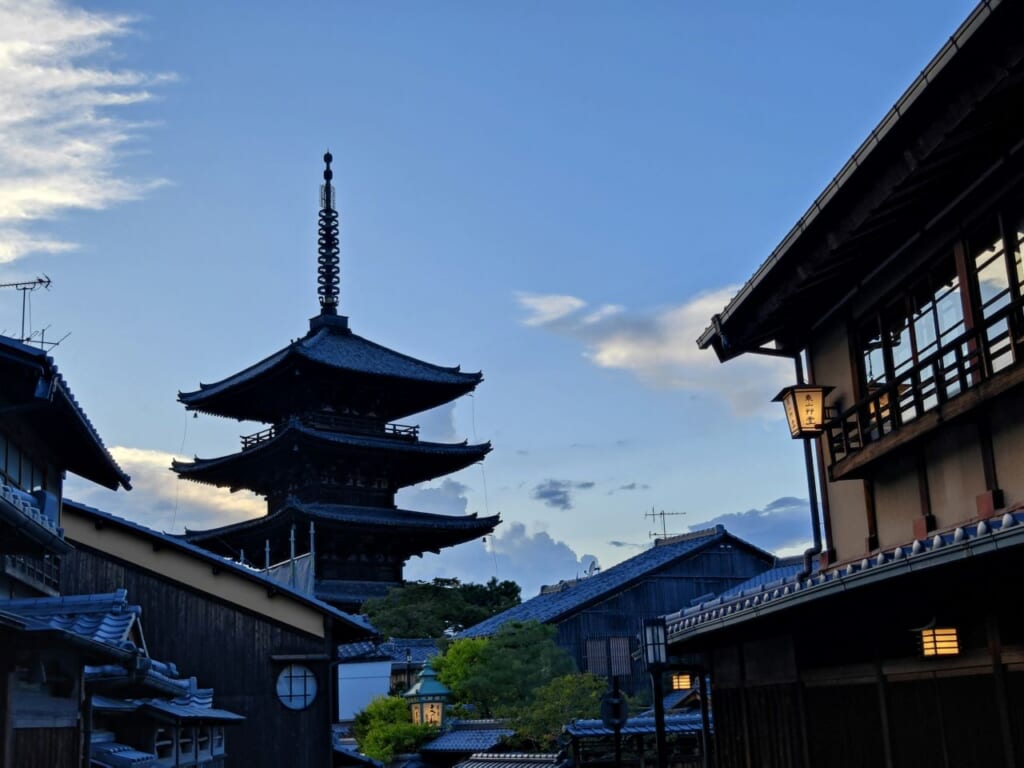
A New Realm
The architect of this remarkable and controversial observatory was Mamoru Yamada, who in 1920 had been a founding member of the Bunriha Kenchikukai 分離派建築会 (Secessionist Architecture Group). This six-strong cohort of artistically minded upstarts were directly influenced by the Viennese Secession and its non-traditionalist, anti-nationalist ideas, as well as finding inspiration in contemporary sculpture and the methodology of both Bauhaus and the Amsterdam School.
Alongside other creatively successful, but less publicly recognized work, the short-lived but influential group played their part in the rebuilding of important infrastructure after the Great Kanto Earthquake of 1923, with Yamada and Bunzo Yamaguchi’s still-celebrated Eitai Bridge being the first of many such reconstructions.
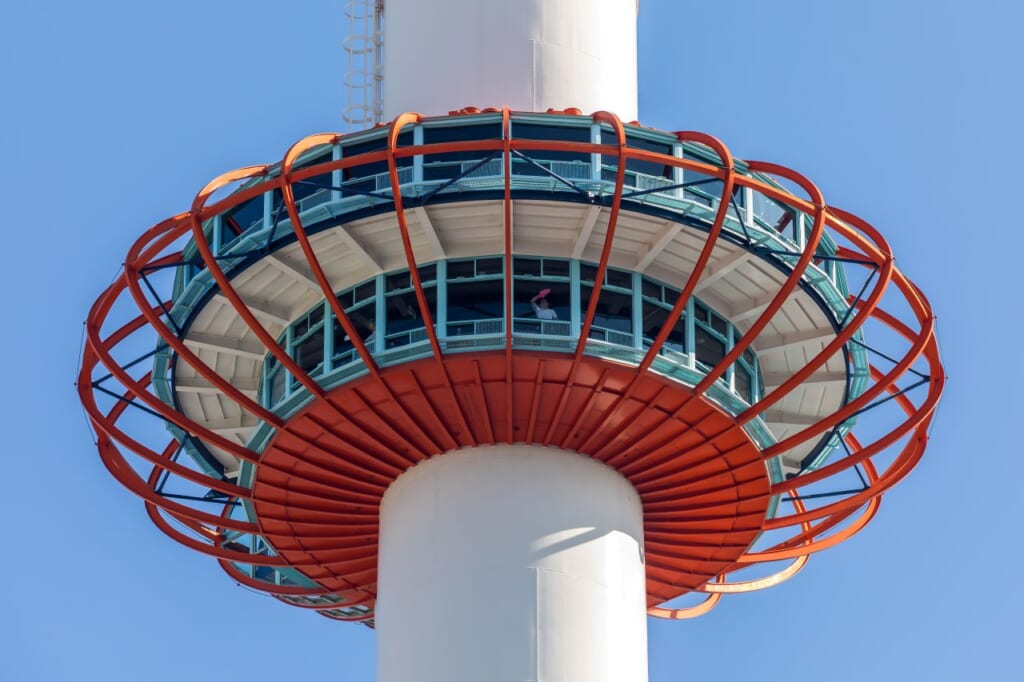
The enticingly firebrand manifesto of the then-young architects had stated, “We secede from the architectural realm of the past to create a truly significant new realm with every building that we construct.” Words that in Yamada’s case were still ringing true as he drew up his plans for Kyoto almost half a century later.
Panoramic Views from Kyoto Tower
With the help and guidance of Makoto Tanahashi, a doctor of engineering at Kyoto University, Yamada achieved extraordinary feats in the construction of Kyoto Tower. As a rare example of large-scale architecture that utilizes a monocoque structure (more commonly found in the design of ships and airplanes), the tower’s outer shell, composed of specially designed steel sheets, supports its own weight, eliminating the need for a steel frame.
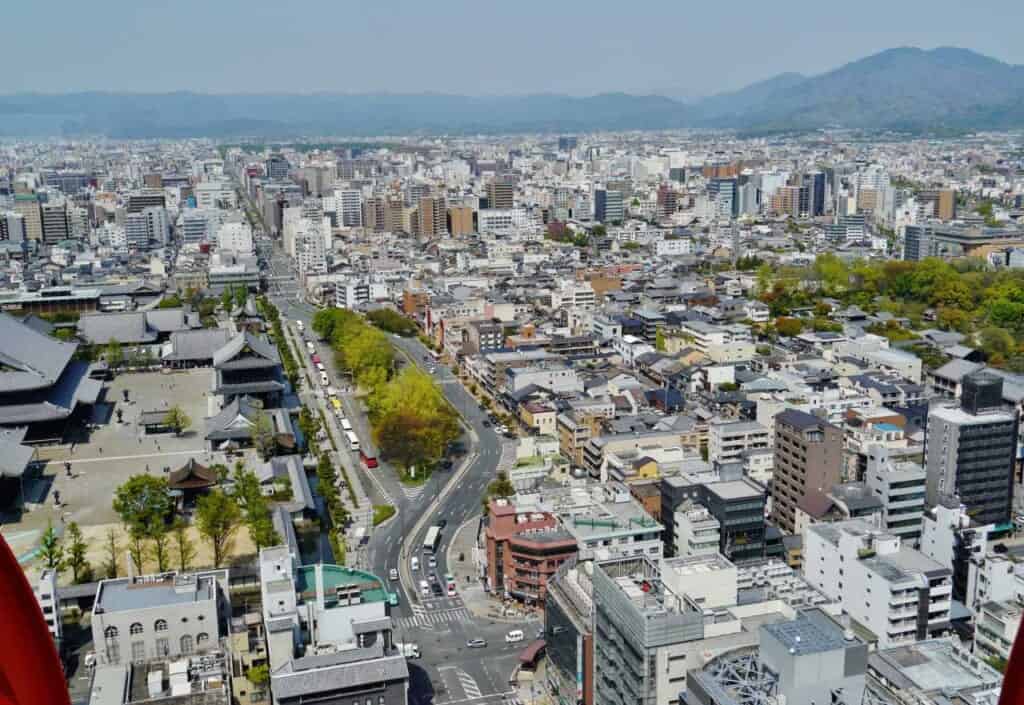
The relatively unremarkable nine story building which acts as a launchpad for the tower, houses restaurants, shops, and across the top four floors, a three-star hotel. The roof above the hotel serves as a barbecue beer garden, directly above which, sits the first observation deck, housing a lounge-style restaurant and bar. At the 328 ft (100 meters) mark is the main observatory. Both of these public areas are circular in design, allowing panoramic views of the stately grid-like elegance of the city that stretches out below.
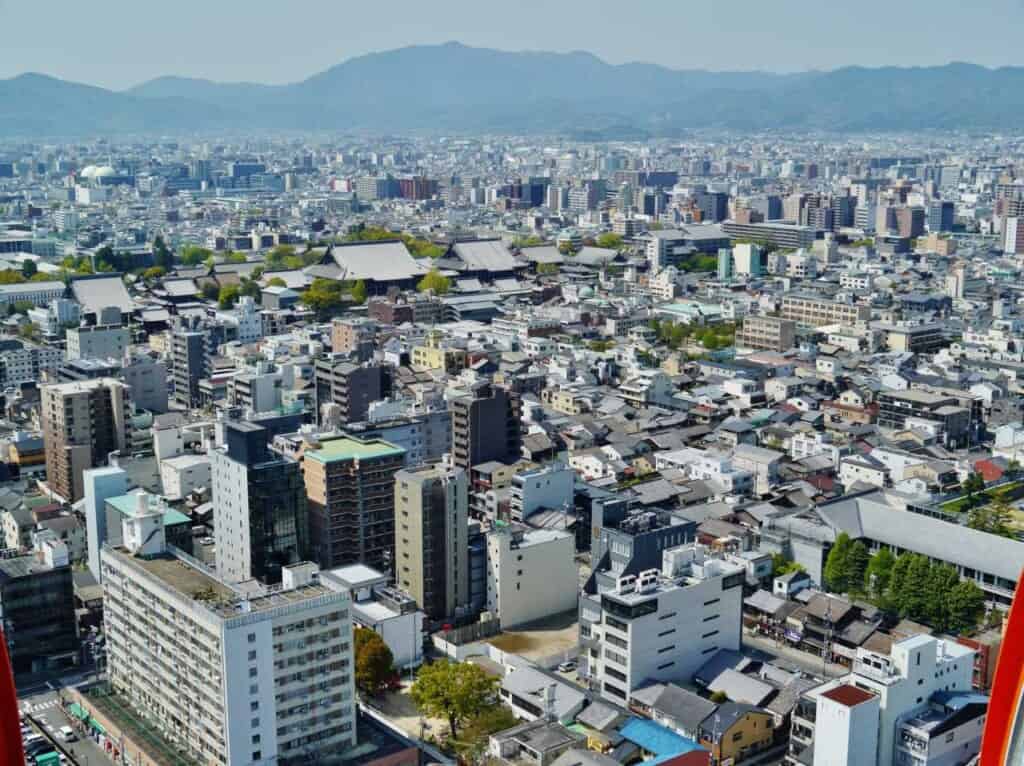
The period features of these capsule-like Showa-era facilities, evoke a retro-futurist atmosphere, familiar from interplanetary entertainments like Star Trek and 2001: A Space Odyssey, although the tower precedes both. As with Tange’s Millennium-Falcon-like National Gymnasium, there is a feeling that Japanese architects and designers of the time were at least a step ahead of the space-embracing zeitgeist.
An Understanding
Despite its somewhat questionable beginnings, Kyoto’s unexpected late-life addition has not gone unloved. The once-impossibly far-fetched notion of dining and unwinding dizzyingly far above the trappings and traditions of Kyoto, has now become part of the everyday life of the city, and a draw to visitors from around the world.
As with many a parent and child relationship, seemingly irreconcilable differences between the once-brashly-new tower and the long-established city that it looks out over have receded, with time bringing them first to an understanding, and eventually a resemblance of each other. As the days and the decades of their shared history grow, the tower’s red and blue neon is inextricably blended into the palette of the Kyoto skies, and this beacon of the ever-more-distant 20th century looks increasingly at home in its ancient surrounds.
Feature image by Kevin Doran.


